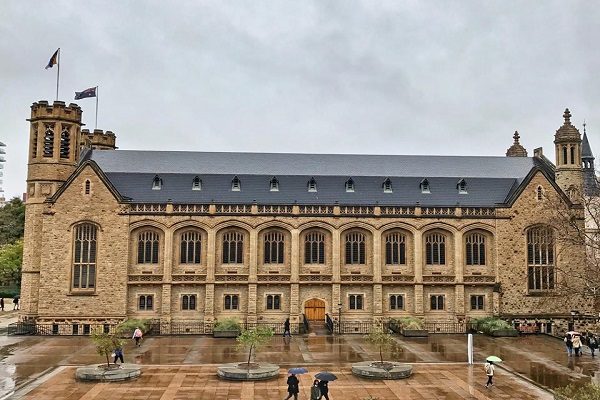University of Adelaide: Blue Carbon funding secures seagrass restoration in Gulf St Vincent
Twenty hectares of seagrass will be restored in the Gulf St Vincent off Port Gawler, north of Adelaide, as part of a project involving the University of Adelaide and the South Australian Research and Development Institute (SARDI), the research division of the Department of Primary Industries and Regions (PIRSA).
Seagrasses provide a range of important functions to the marine ecosystem, including as a food source and habitat for various species, reducing coastal erosion and storing significant amounts of carbon (known as ‘blue carbon’).
Associate Professor Jason Tanner, who leads the Environmental Assessment and Rehabilitation Sub-program in the Marine Ecosystems Program, in Aquatic Sciences at SARDI, said this project would build on the cost-effective techniques SARDI has developed over the past 20 years.
“This involves dropping around 100,000 biodegradable hessian sandbags on the seafloor over winter, and allowing wire weed seagrass seedlings to naturally attach to them,” said Dr Tanner, who is also an affiliate senior lecturer at the University of Adelaide’s School of Biological Sciences.
“The sandbags provide a stable environment that overcomes sand movement and allows the seedlings to establish, before the bags rot away.
“Without the bags, seedlings don’t have much to attach to, and any that do settle get washed away in storms.
“This approach avoids the need to use divers, costs less than 10 per cent of what traditional restoration techniques, involving the direct planting of seagrass cost, and avoids disturbing remaining seagrass beds to obtain planting material.
“Seedlings of tape weed can also be pre-planted into the bags following their summer fruiting period before they are dropped to the seafloor. This area has experienced extensive seagrass loss over the last 60 to 80 years due to decreased water quality. While water quality has improved, there are only limited signs of natural seagrass recovery.
“This is primarily because once seagrasses are lost, the sediment becomes unstable, limiting the ability for seagrass to recolonise.”
Seagrasses are key primary producers in shallow waters, with much of their biomass ending up as food for small invertebrates that pass it up the food chain to larger fish and marine mammals.
“Seagrasses buffer wave energy, reducing coastal erosion, and are important blue carbon habitats, storing larger volumes of carbon for much longer than most terrestrial systems.”
Dr Alice Jones, University of Adelaide lecturer in resilience ecology
They are also vital habitats for many species, including King George whiting, garfish and leafy sea dragons.
University of Adelaide lecturer in resilience ecology, Dr Alice Jones, will lead the ecosystem functioning and carbon capture elements of the project.
“Seagrasses buffer wave energy, reducing coastal erosion, and are important blue carbon habitats, storing larger volumes of carbon for much longer than most terrestrial systems,” Dr Jones said.
“Once established, the project will examine how effectively the restored patches operate as habitats for fauna, and in accumulating blue carbon, to ensure that seagrass rehabilitation not only restores the actual seagrass, but the functions that the habitat provides in the environment.”
The researchers secured $1,972,500.00 in funding for the project from the Australian Government Department of Agriculture, Water and the Environment’s Blue Carbon Ecosystem Restoration Grants program.

